The convoluted history of the Russian Revolution and the tumultuous early years of the Soviet Union always perplexed me. The founders of the Soviet state consistently acted contrary to the Marxist notion that the state would eventually wither away. In fact, they created the opposite, establishing a oppressively bureaucratic state that governed nearly every aspect of the people’s lives. Along the way, tens of millions of people were murdered, imprisoned, tortured, and exiled.
Trotsky was a rival and opponent of Stalin. He lost out in the power struggle that ensued after Lenin died. He was exiled by Stalin–and later murdered by Soviet agents at his home in the Coyoacán neighborhood of Mexico City.
To some leftists who were horrified by the bloodbath that marked Stalin’s regime, Trotsky was the “good” Soviet communist, the man who argued against the bureaucratization of the early Soviet Union. Color me unconvinced. The Trotskyites seemed no less fanatical than the Stalinists, no less manically intent on producing mind-numbing tracts of revolutionary theory in attempts to justify whatever policies seemed expedient at the moment. While Trotsky did push for more democracy within the Communist Party and less heavy-handed rule by the Soviet state, those positions neatly coincided with his own attempts to gain more power.
The promise of communism captivated millions. Indeed, anyone with half a heart who sees the abuses and neglects of capitalism must wonder whether there isn’t a better system of organizing our economy and society. All that longing and hopefulness had to go somewhere once the horrors of Stalinism were laid bare. A good deal of it was invested in Trotsky, the exiled Jewish Ukrainian communist with the kindly visage and the funky glasses. Since he had never held absolute power in the Soviet Union, it was easy to imagine that he would have been a benevolent ruler. The only problem with this theory is that there’s no evidence for it; the only strength of it is that it can’t be disproven.
With this history in mind, I made my way to the house where Trotsky lived and died in Mexico City just after I visited Frida and Diego’s digs. It was only three blocks away.
Although Trotsky’s compound was spacious and had room for his extended family, bodyguards, and servants, it was relatively austere. The walls and woodwork were plain, the rooms were relatively small, the furniture strictly utilitarian. Certainly this was nothing like living in the Kremlin. This room in the photo below was the workspace for Trotsky’s two secretaries. In the left rear of the photo is an old Edison dictating machine.
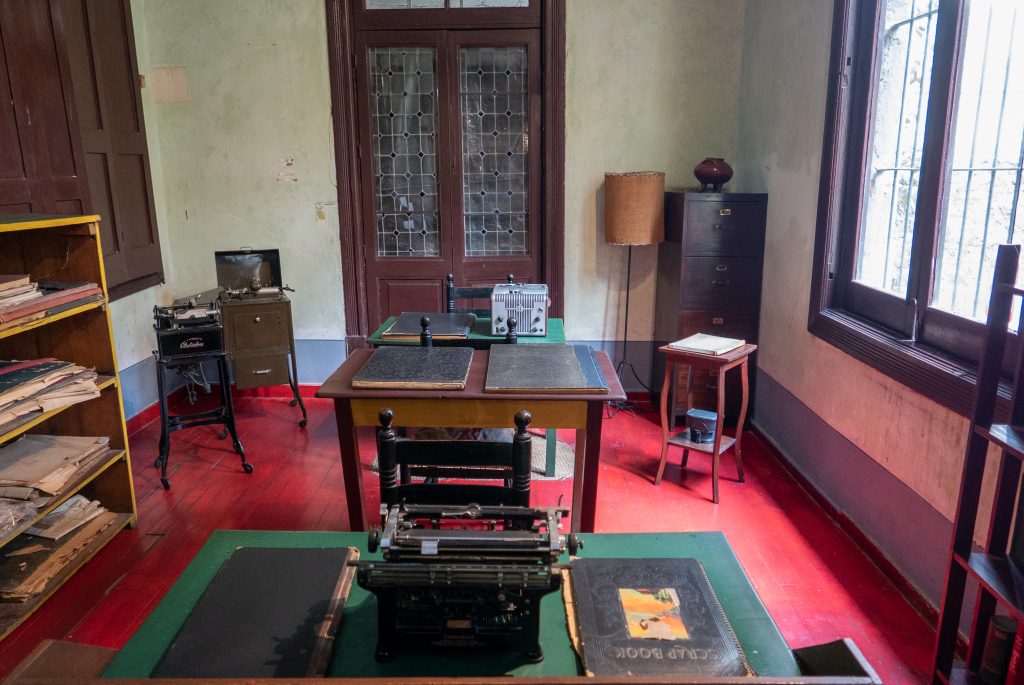
As I passed deeper into the house, the rooms became even more spare. This was Trotsky’s bedroom. Note the thick shutters, which like the interior doors were a sandwich of two thick plates of steel with a generous helping of concrete in between. The interior doors were built the same way and set into small, deep doorjambs. Those doors were equipped with heavy deadbolts that allowed people to barricade themselves inside.

Trotsky had ample reason to take defensive measures: he knew that Stalin was trying to kill him. In May 1940, a group of assassins armed with machine guns attempted to storm the compound. Trotsky’s guards fended off the attackers; bullet holes in the walls still mark this event.
Running parallel to the row of bedrooms was a long narrow bathroom/dressing room.
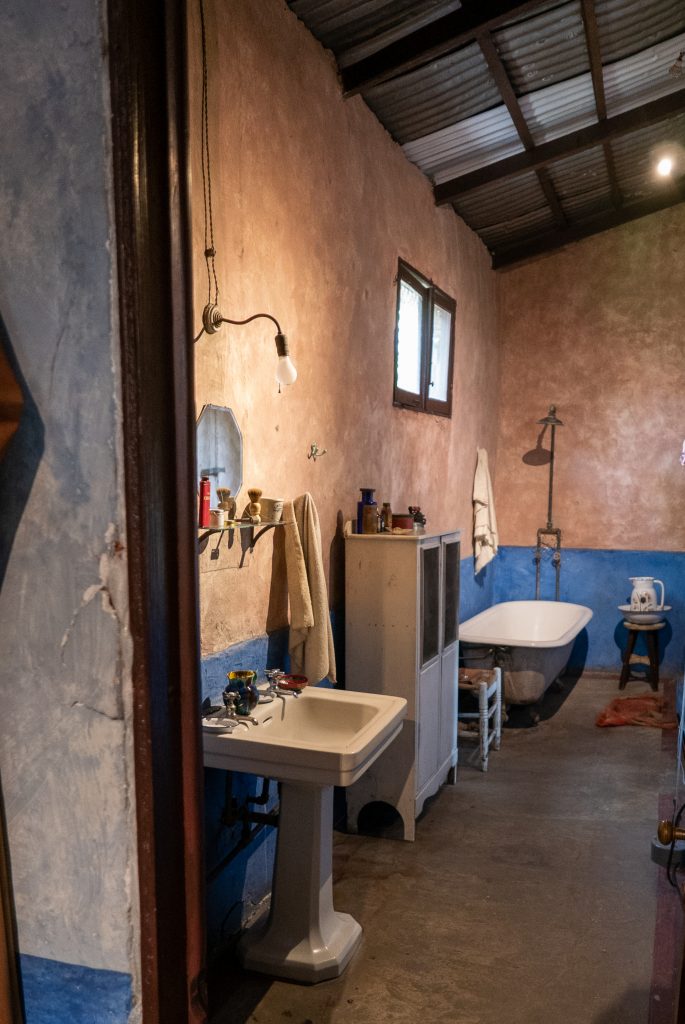
Trotsky finally met his fate in his study in August 1940. An NVKD agent named Ramón Mercader befriended an American communist, Sylvia Ageloff, who was one of Trotsky’s confidantes. Using this connection, Mercader gained the trust of Trotsky’s family and bodyguards and occasionally did small favors for them. While he was alone with Trotsky in his study one evening, he asked him to read a document. As Trotsky began to look it over, Mercader struck him from behind in the head with an ice ax.
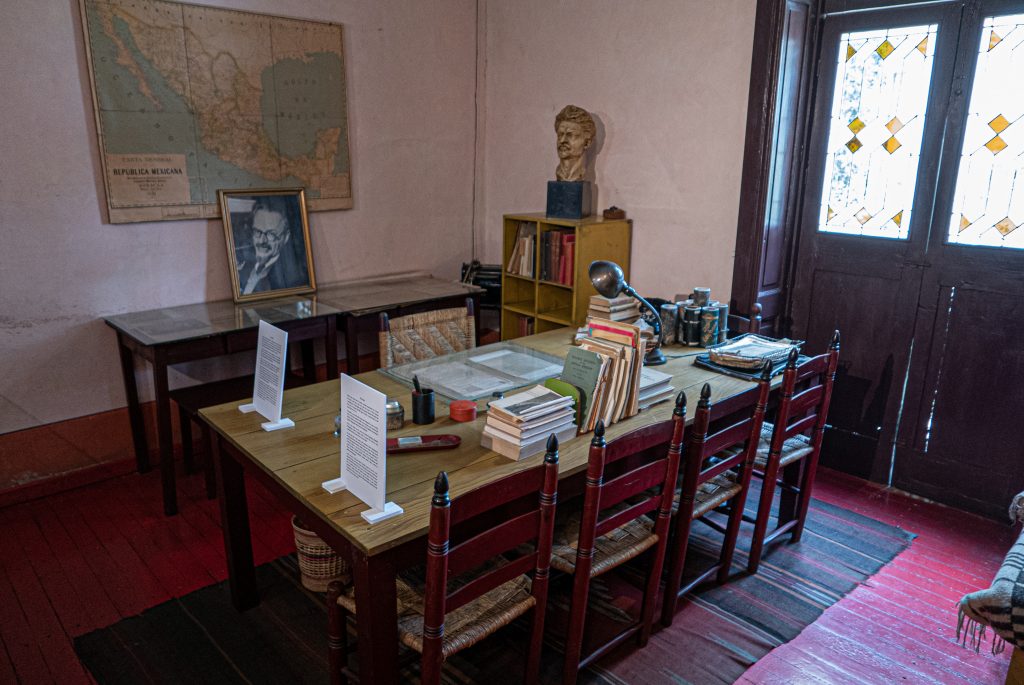
The blow didn’t kill Trotsky immediately, but he died a day later from his wounds.
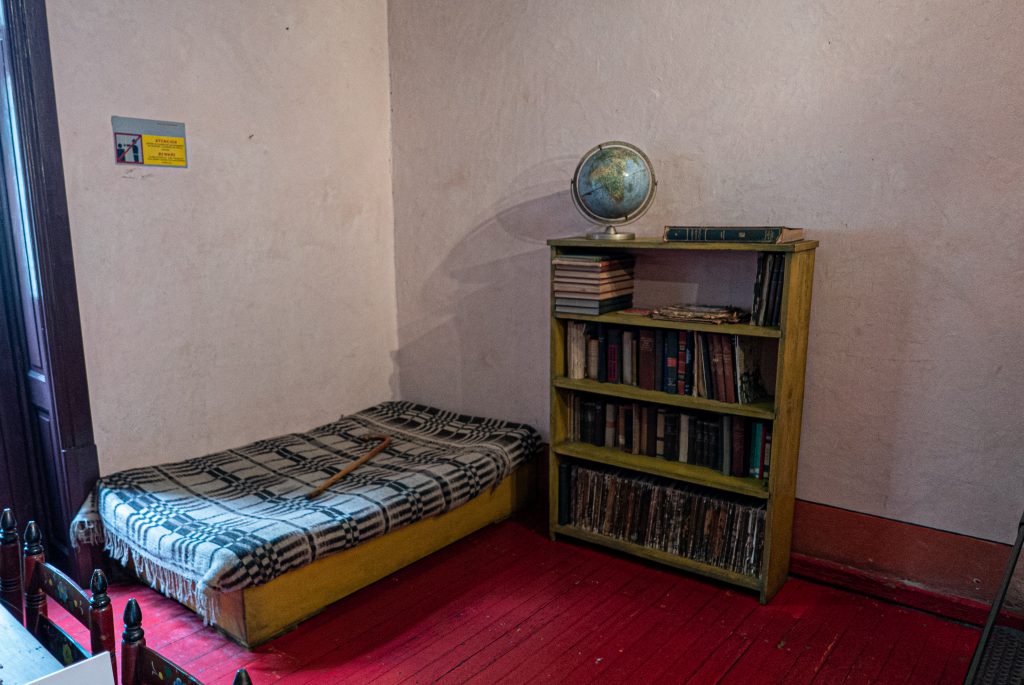
Stalin was delighted that his old rival had finally been dispatched and bestowed the Order of Lenin on Mercader’s mother, who had assisted with the planning of the assassination. Mercader himself was found guilty of murder by the Mexican authorities and served twenty years in prison. Upon his release, the head of the KGB named Mercader as a Hero of the Soviet Union, the nation’s highest honor.
Trotsky’s home in Coyoacán is supposedly very much as it was left on the day of his death. On his bookshelf are several Edison dictaphone recordings, a book by Marx, two volumes of Trotsky’s own writings, The Game by Jack London, and Willa Cather’s Death Comes for the Archbishop.
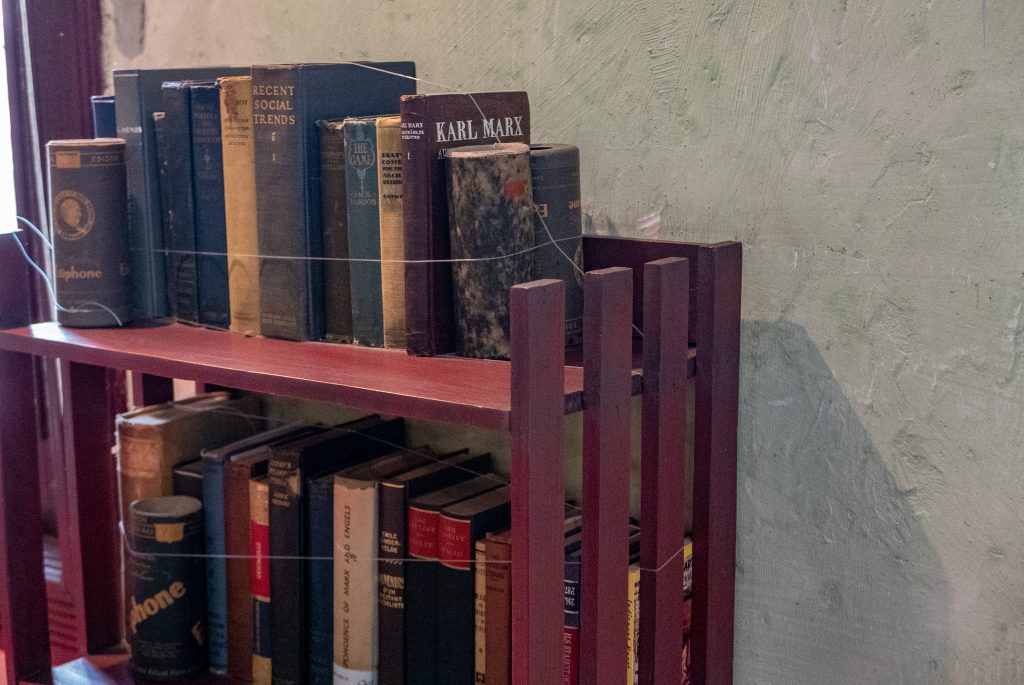
The house now has a small museum attached to it, which was something of a disappointment to me. Most of its displays consisted of black and white photos blown up so big as to be almost unrecognizable. There were very few artifacts, personal effects, or other materials that might have illuminated Trotsky’s life. Still, for anyone interested in the history of the first half of the twentieth century, a visit to this site may make it easier to visualize how Soviet exiles lived–and died.


































Speak Your Mind